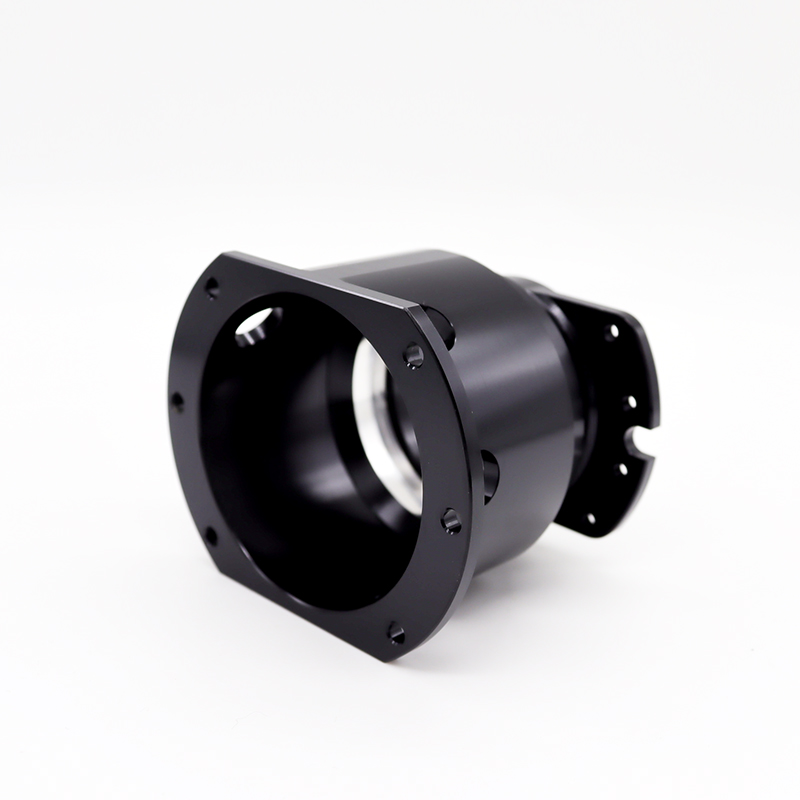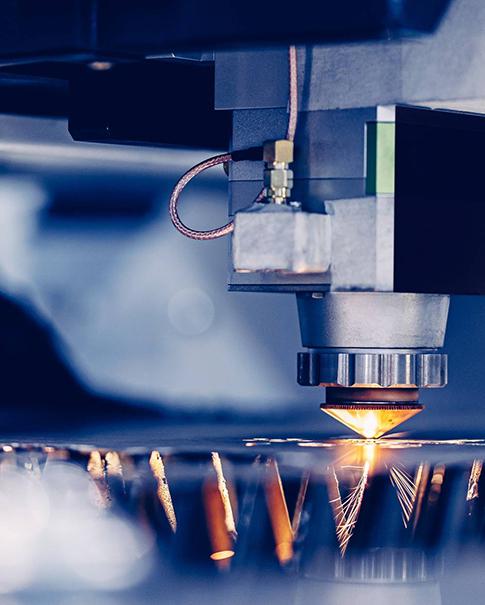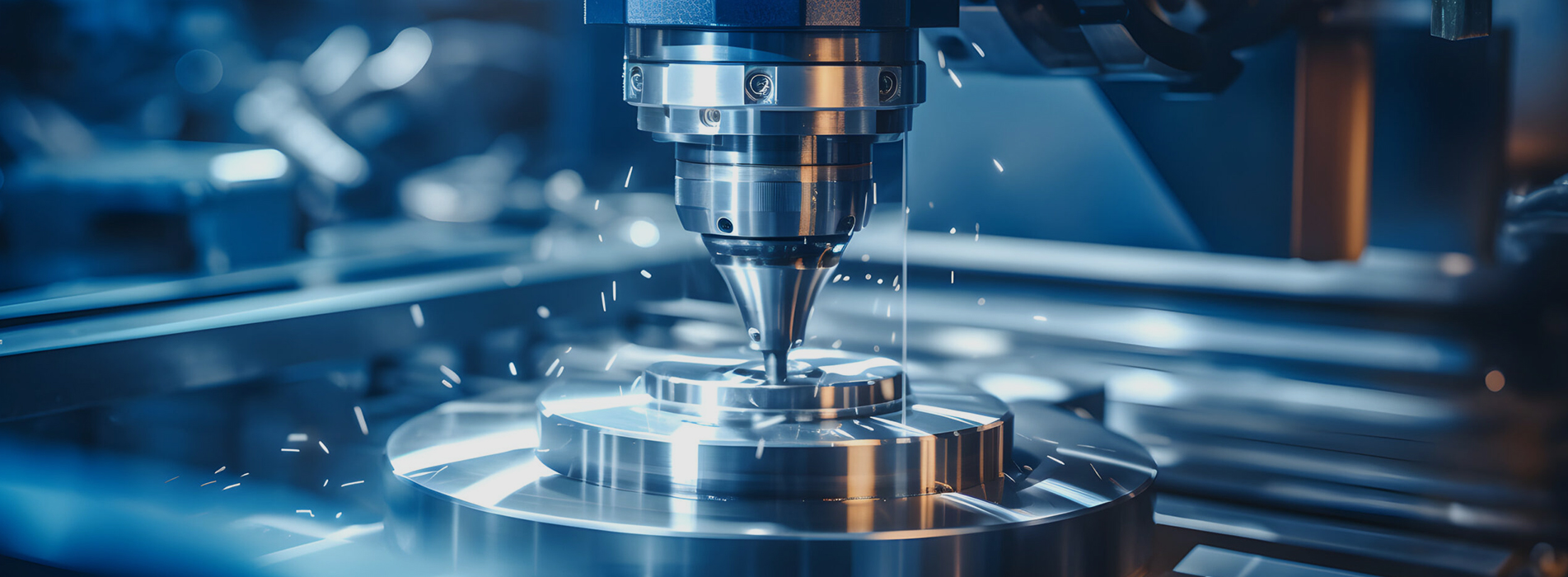Der Gipfel der Präzisionsfertigung: CNC-Oberflächenbehandlungstechnologie mit hoher Präzision und geringer Reflektivität
In der modernen Präzisionsfertigung bestimmen die beiden wichtigsten Kennwerte – Maßgenauigkeit und Oberflächenbeschaffenheit – oft direkt die Qualität und Zuverlässigkeit des Endprodukts. CNC-Bearbeitungstechnologie (Computer Numerical Control) ist seit langem der Grundstein für die Erzielung von Maßgenauigkeit im Mikrometer- oder sogar Nanometerbereich. Erweitert sich der Anwendungsbereich jedoch auf hochpräzise Bereiche wie Optik, Luft- und Raumfahrt und Halbleiter, tritt ein weiterer wichtiger Kennwert in den Vordergrund: die geringe Reflektivität der Oberfläche.
Die Kombination aus hochpräziser Bearbeitung und Oberflächenbehandlung mit geringer Reflektivität stellt heute eine der höchsten Stufen der CNC-Fertigungstechnologie dar. Dies ist nicht nur ein Test für die Leistung der Werkzeugmaschinen, sondern auch eine umfassende Herausforderung für die Materialwissenschaft, die Werkzeugwegplanung und die Nachbearbeitungstechniken.
I. Warum ist eine geringe Reflektivität notwendig? Über die „ästhetischen“ funktionalen Anforderungen hinaus
Oberflächen mit geringer Reflektivität dienen weit mehr als nur der Beseitigung unnötiger Reflexionen (oder „Blendschutz“), um ästhetische Effekte zu erzielen. Dahinter verbirgt sich ein tiefgreifender funktionaler Bedarf:
- Leistung optischer Systeme: In optischen Geräten wie Kameras, Teleskopen, Mikroskopen und Laserradargeräten kann das reflektierte Licht von internen Komponenten (wie Gehäusen, Halterungen und Blendenlamellen) Streulicht bilden, das den Bildkontrast deutlich reduziert, Geisterbilder verursacht und sogar das Signalrauschen erhöht. Oberflächen mit geringer Reflektivität können Streulicht effektiv absorbieren und so die Bildqualität und das Signal-Rausch-Verhältnis des Systems verbessern.

2. Tarnung im Militär und in der Luft- und Raumfahrt: Die hohe Reflektivität von Geräteoberflächen ist ein wichtiges Merkmal für die Radarwellen- und Infraroterkennung. Durch eine Behandlung mit geringer Reflektivität können der Radarquerschnitt (RCS) und die Infraroteigenschaften deutlich reduziert werden, was die Tarnleistung und Überlebensfähigkeit verbessert.
3. Halbleiter- und Sensortechnologie: Im Inneren von Lithografiemaschinen und Waferverarbeitungsanlagen kann jede unnötige Reflexion die hochpräzisen optischen Pfade oder Sensormesswerte beeinträchtigen und zu Fertigungsfehlern führen. Auch die Gehäuse der Sensoren selbst müssen eine geringe Reflektivität aufweisen, um die Messgenauigkeit zu gewährleisten.
4. Medizinische und Forschungsgeräte: Bei allen Geräten wie Endoskopen und hochpräzisen Versuchsinstrumenten usw. müssen interne Lichtinterferenzen minimiert werden, um die Reinheit der Beobachtung und der Daten zu gewährleisten.
II. Wie lässt sich das erreichen? Die Integration von hochpräziser CNC- und Niedrigreflexionstechnologie
Um ein Teil mit sowohl hochpräzisen Abmessungen als auch geringer Reflektivität zu erhalten, ist ein mehrstufiges systematisches Projekt erforderlich:
Hochpräzise CNC-Bearbeitung: Grundlage
· Maschine mit ultrahoher Präzision: Durch die Verwendung linearer Gitterlineale mit einer Auflösung im Nanometerbereich, thermischer Kompensationssysteme, eines äußerst steifen Betts und einer Spindel sowie hochwertiger Fünf-Achsen-CNC-Maschinen wird höchste Präzision bei geometrischen Formen und Abmessungen gewährleistet.
· Präzise Schneidwerkzeuge und -strategien: Durch den Einsatz von Diamantwerkzeugen oder Werkzeugen aus ultrafeinen Hartmetallpartikeln in Kombination mit optimierten Schnittparametern (Drehzahl, Vorschub, Schnitttiefe) und Werkzeugwegen (z. B. Slow-Tool-Servo-Drehen) wird bereits im Anfangsstadium der Verarbeitung eine hervorragende Oberflächenqualität (geringe Rauheit) erreicht und so eine perfekte Grundlage für die anschließende reflexionsarme Behandlung geschaffen.
2. Erzielen einer Oberflächenbehandlung mit geringer Reflektivität: Der Kern der geringen Reflektivität besteht im Wesentlichen darin, die mikroskopische Struktur oder chemische Zusammensetzung der Oberfläche zu verändern, um die Lichtabsorption zu verbessern und die Spiegelreflexion zu reduzieren. Die wichtigsten technischen Ansätze sind:
· Oberflächen-Mikrostrukturbearbeitung (Texturierung):
Technisches Prinzip: Durch die extrem hohe Positioniergenauigkeit von CNC-Maschinen lassen sich dichte, mikrometer- oder nanometergroße Rillen, Vertiefungen oder komplexe dreidimensionale Strukturen in die Oberfläche der Teile einarbeiten. Diese Strukturen können als „Lichtfallen“ betrachtet werden, da einfallendes Licht mehrfach reflektiert und absorbiert wird und somit nur schwer wieder entweichen kann. Dadurch entsteht der „Schwärzungseffekt“.
· Implementierungsmethode: Die Oberflächenmikrostruktur kann direkt durch Fünf-Achsen-Fräsen, Femtosekunden-Laserablation, chemisches Ätzen usw. geformt werden.
· Spezielle Beschichtungen/Adsorptionen:
· Technisches Prinzip: Auf das bearbeitete Basismaterial kann durch physikalische Gasphasenabscheidung (PVD), chemische Gasphasenabscheidung (CVD) oder Sprühverfahren eine Schicht aus Material mit hohen Lichtabsorptionseigenschaften aufgebracht werden, beispielsweise Schwarzchrom, Schwarznickel, Kohlenstoffnanoröhren (CNT)-Beschichtung oder spezielle Keramikbeschichtung.
Vorteile: Hohe Selektivität, ermöglicht die Entwicklung von Beschichtungen für unterschiedliche Wellenlängen (wie sichtbares Licht, Infrarot, Radarwellen) mit extrem hoher Absorptionseffizienz. Allerdings muss die Schichtdicke streng kontrolliert werden, um die hochpräzisen Abmessungen der Teile nicht zu beeinträchtigen.
· Chemische Umwandlungsbehandlung:
· Technisches Prinzip: Durch chemische Verfahren (z. B. anodische Oxidation, Schwarzoxidation) kann auf Metalloberflächen (insbesondere Aluminium und Stahl) ein poröser und rauer chemischer Konversionsfilm erzeugt werden. Dieser Film absorbiert Licht. Ein typisches Beispiel hierfür ist die Schwarzoxidation von Aluminiumlegierungen.
· Hinweis: Der Behandlungsprozess muss präzise kontrolliert werden, um eine Beeinträchtigung der genauen Abmessungen zu vermeiden.
3. Zusammenarbeit und Herausforderungen: Die größte Herausforderung besteht darin, dass durch nachfolgende Behandlungen mit geringer Reflexion (wie Beschichtung oder Oxidation) extrem dünne zusätzliche Schichten entstehen, die die endgültige Größe des Teils verändern können. Daher muss bereits in der ersten Phase der hochpräzisen CNC-Bearbeitung ein „kompensatorisches Design“ durchgeführt werden, bei dem Faktoren wie die Beschichtungsdicke im Voraus berücksichtigt werden. Außerdem muss eine Verarbeitung mit „negativem Toleranzmaß“ durchgeführt werden, um sicherzustellen, dass die endgültige Größe des bearbeiteten Teils immer noch genau den Designanforderungen entspricht.
















 ABONNIEREN SIE UNSEREN NEWSLETTER
ABONNIEREN SIE UNSEREN NEWSLETTER






